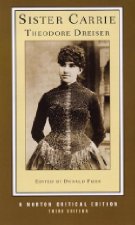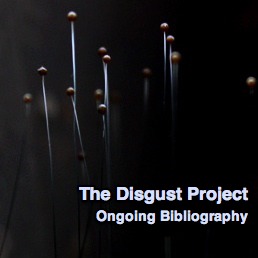
Sister Carrie is one of a specific handful of American novels that I learned about in school, but (until now) never actually read. Along with those of Upton Sinclair, H.L. Mencken, Sinclair Lewis, Edward Bellamy and to a certain extent Stephen Crane, the works of Theodore Dreiser were always presented to me as more important to history than interesting as literature - not exactly the kind of ringing endorsement that inspires a person to run out and buy a book today. These authors were exposing social ills and introducing literary naturalism; they were unafraid to confront the American public with previously-taboo topics like the lives of prostitutes, or corrupt business interests. But lord, implied my high-school textbooks, were they ever dry and boring. Even in English classes, these authors were lauded mainly for paving the way for those writing after them, who took the social freedoms they pioneered and added a livelier prose style and a more compelling cast of characters. Recently, thinking about everything ELSE my high-school textbooks got wrong, I began to wonder if this generation of authors are really as unreadable as all that, and figured I should do my own bit of experimentation. Sister Carrie was my first foray into this early-20th-century American naturalist enclave, and it was an enlightening journey.
First of all, let me say that I can understand why Dreiser has been neglected. I would describe his prose as "utilitarian": it gets the job done, but doesn't involve any pyrotechnics. With the likes of Hemingway and Welty bursting onto the American scene a few short decades later, I can see why Dreiser's businesslike approach came to seem outdated and clunky. It's an odd, transitional-seeming style: more journalistic and less ornamented than your purple Victorian prose, yet not so aggressively streamlined or giddily experimental as the work of many Modernists.
The place smelled of the oil of the machines and the new leather - a combination which, added to the stale odours of the building, was not pleasant even in cold weather. The floor, though regularly swept every evening, presented a littered surface. Not the slightest provision had been made for the comfort of the employees, the idea being that something was gained by giving them as little and making the work as hard and unremunerative as possible. What we know of footrests, swivel-back chairs, dining-rooms for the girls, clean aprons and curling irons supplied free, and a decent cloak room, were unthought-of. The washrooms were disagreeable, crude, if not foul places, and the whole atmosphere was sordid.
(I chose this passage because it gives a fair idea of Dreiser's style, but also because I think it's hilarious that "clean aprons and curling irons supplied free" would be an item on the agenda for workers' rights. Where have my free curling irons been all these years of working, I'd like to know?)
I can also understand the criticism of Dreiser's characters for being undeveloped or unsympathetic, but I think he's actually making a conscious choice here: his super-naturalistic narrative method, combined with some cynicism about people rationalizing their own laziness, means that this is more a novel about circumstances acting on players than about individuals taking control of their own destinies. The young protagonist, Carrie, moves to the big city and quickly becomes overwhelmed with how hard a working-class woman has to labor in order to earn her living. When she's presented with the opportunity of being taken care of by a man and living with him out of wedlock, she drifts into it without ever taking decisive action. Similarly, Drouet (the young man) never plans to lure Carrie into a life of sin; he just finds it distasteful to be tied down in a real marriage, and so puts off the wedding indefinitely. The other characters drift similarly through their lives, finding reasons not to disrupt the momentum that has built up around them. I think Dreiser, like many socially- or socialist-minded writers, is using Carrie, Drouet and Hurstwood as Everyman characters; his book is more a portrait of the material conditions and social forces in turn-of-the-century Chicago and New York than of particular individuals within those cities.
I wrote in my thoughts on The Good Earth that this universalizing approach is not my favorite novelistic technique; I tend to prefer stories with highly-individualized characters and distinctive narrative voices, not to mention innovative, well-crafted prose. Nevertheless, it's a tribute to Dreiser's storytelling ability that I had a hard time putting Sister Carrie down. He uses the tools at his disposal in compelling, sometimes surprising ways: one of my favorites was the way in which he played the characters off each other, enlisting the reader's sympathy first for one, then for another. All three of the main characters act very poorly at certain points, and all three fall prey to the lure of habit and drift along in their unsatisfactory lives for painfully long periods before they are finally spurred to make some kind of change. As a reader, I found myself either frustrated with or cheering for all three characters in sequence as the novel progressed. And although any given character may be acting badly at a certain juncture, the fact that I had been rooting for them only fifty pages earlier meant that none of the three was ever wholly unsympathetic.
In fact, Dreiser works so hard to keep Carrie, Drouet and Hurstwood emotionally accessible to the reader, even at their most selfish and unlikeable, that I was reminded of the work of contemporary writers like Toni Morrison and Dorothy Allison - writers who make a point of empathizing with characters usually beyond the pale. I remember how conflicted I felt, reading Morrison's The Bluest Eye, at the author's empathic portrayal of a father who rapes his own daughter, and I wonder whether readers in 1900 would have found Dreiser's subject matter to be equally shocking and conflicting. Probably so, judging by its history: it was withdrawn from publication for being "too sordid," and only after Dreiser cut many suggestive passages did Doubleday agree to publish the expurgated version. In another triumph for Norton Critical Editions, I read the appended catalog of the passages cut in the initial publication, which was fascinating. To my surprise, many of them involved scenes in which Carrie gets cat-called and solicited on the street - surely the fact that this happens is no mystery to any urban woman? I certainly deal with it whenever I walk downtown. But maybe, at the turn of the century, men only felt confident cat-calling women who looked working-class, so the middle-class readers of Sister Carrie would not have encountered the behavior? I'm not sure how to feel about the suggestion that public humiliation of women has been democratized in American cities over the past century, but it's interesting to think about.
But cat-calling is just one small aspect of the loving-yet-critical portraits of 1890s New York and Chicago in this novel. Dreiser is at his most vivid when depicting the inhumane conditions of city life and the unfettered, dog-eat-dog realities of pre-regulation American capitalism. It's this, along with the frank portrayals of cohabiting out of wedlock, that made the book famous, and I think the urban landscape is really the star of Dreiser's show. The reader gets a strong sense of a world full of possibility ripe for the picking - all the young men, like Drouet, streaming in from the countryside to secure sales positions, the newly-constructed glass-fronted buildings housing newly-incorporated retail firms, the movers, shakers, and hangers-on in the untamed melee of exponential urban growth. And one also sees vividly how the skirmish-and-grab for that pool of possibility creates a class of casualties, left even more to their own devices than the modern urban homeless. Dreiser does a good job of communicating the extent to which all his characters are performing without a safety net, and even the highest is capable of a dramatic fall. I think I preferred Sister Carrie to The Good Earth because Dreiser's cities-as-characters are so dynamic. I'm not sure turn-of-the-century American urban literature will become my new favorite genre, but Sister Carrie was certainly enough to convince me to give it another try.
(Sister Carrie was my fourth book for the Decades '09 Challenge, representing the 1900s.)

